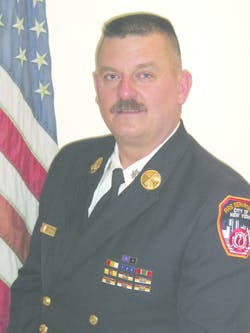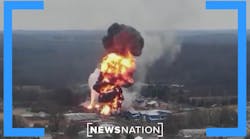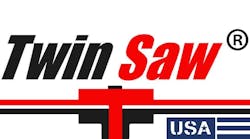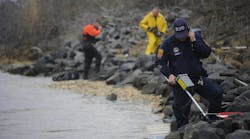I’ve talked about the power saw before, but there is always room for more discussion on such a useful, important and powerful piece of equipment. Whatever brand or model of power saw you use, including chain saws, there are some basics you need to know. As always, several methods can be used for the various tactics that will be discussed. Any skills, tactics or methods I describe or suggest are ones I have used and found helpful and effective. Here is some basic, yet vital information you need to properly, effectively and safely use a power saw.
1. Starting process – You must know the proper stance, handhold and grip for the handle on the pull cord. Many firefighters simply grab the handle and pull the cord with one hand while holding the saw with the other hand. This generally does not work and can be dangerous. The saw should be on the ground, held down with both a hand and a foot, which also generally fits into the handhold where the throttle is located. You also must know whether there is a choke and how it should be set for starting.
2. When to start the saw – That’s a good question and the answer is before you go up or over to the location where it will be used. If there is a problem with the saw, don’t carry it all the way up to the roof to make that discovery. Start the saw immediately after removing it from the compartment and then shut it down and head out to wherever the saw is needed.
3. Carry the saw up a ladder – Most saws have the hardware so a carry strap can be attached. If not, it can be easily modified for this important addition. Carrying a power saw up any kind of ladder without a carry strap is not only dumb but dangerous. Now that I have your attention, let me explain. Buy a carry strap that is long enough that you can put the strap over your head and onto your opposite shoulder. If you simply put the carry strap on the shoulder on the same side of you that the saw is hanging, it will slide or fall off. Now you can use two hands on the ladder. Safety first!
4. Roof cutting – If you have climbed to the roof of a burning building to perform vertical ventilation via a roof cut, stop when you arrive on the roof and determine the most proper location for the cut. This may require you to walk around the roof, look over the edge on all four sides for signs of fire or smoke or talk with other firefighters already operating there. Other indications could be the roof surface smoking or bubbling or otherwise showing signs of heat or fire beneath.
5. Cut with a partner – You should never cut with a power saw alone. This is a two-person tactic that requires a saw operator and a guide person. Once you start cutting, your guide should be behind you with his or her hand or hands ON YOU. The guide person must be in physical contact with the saw operator. Develop and use back slaps for communication. When the saw is running, verbal communication is impossible. Easy signals are: one slap means STOP CUTTING; two slaps means RESUME CUTTING.
6. Cutting stance – When you are holding and operating a power saw, you are in a very hazardous situation. I’m not even talking about the danger of being on the roof of a burning building. I’m talking about cutting off your toes or your foot. Don’t laugh – it’s already happened and you won’t be the first firefighter to do it. The proper stance for most saws is a boxer’s stance with your feet several feet apart and the saw out in front of you midway between your feet. When the saw comes in contact with the roof surface and you begin the pull it toward yourself, you should be able to imagine a line that goes midway right between your feet. Of course, it never gets there because you will be slowly moving backward with small steps and the saw is cutting. (Yes, that’s why you need that guide person.)
7. How deep a cut? – I don’t know! What I do know is that you want to cut deep enough to go through the roof surface, which we will be pulling once the cuts are complete, but not too deep that you cut the structural roof beams below the roof surface. Since we don’t have x-ray vision, you can use the feel of the saw as it cuts through the roof (easy) and as it encounters a beam or support (resistance) With practice and experience, this gets easier to do properly.
See you next month for the rest of the story.
Chief Salka takes a candid look at news and events impacting the fire service in his blog “The Fire Scene” at http://www.firehouse.com/blogs/the-fire-scene.
John J. Salka Jr. will present “5 Ingredients for an Excellent Company Officer” and “Do You Know Your SCBA?” at Firehouse Expo 2013, July 23-27 in Baltimore, MD.






